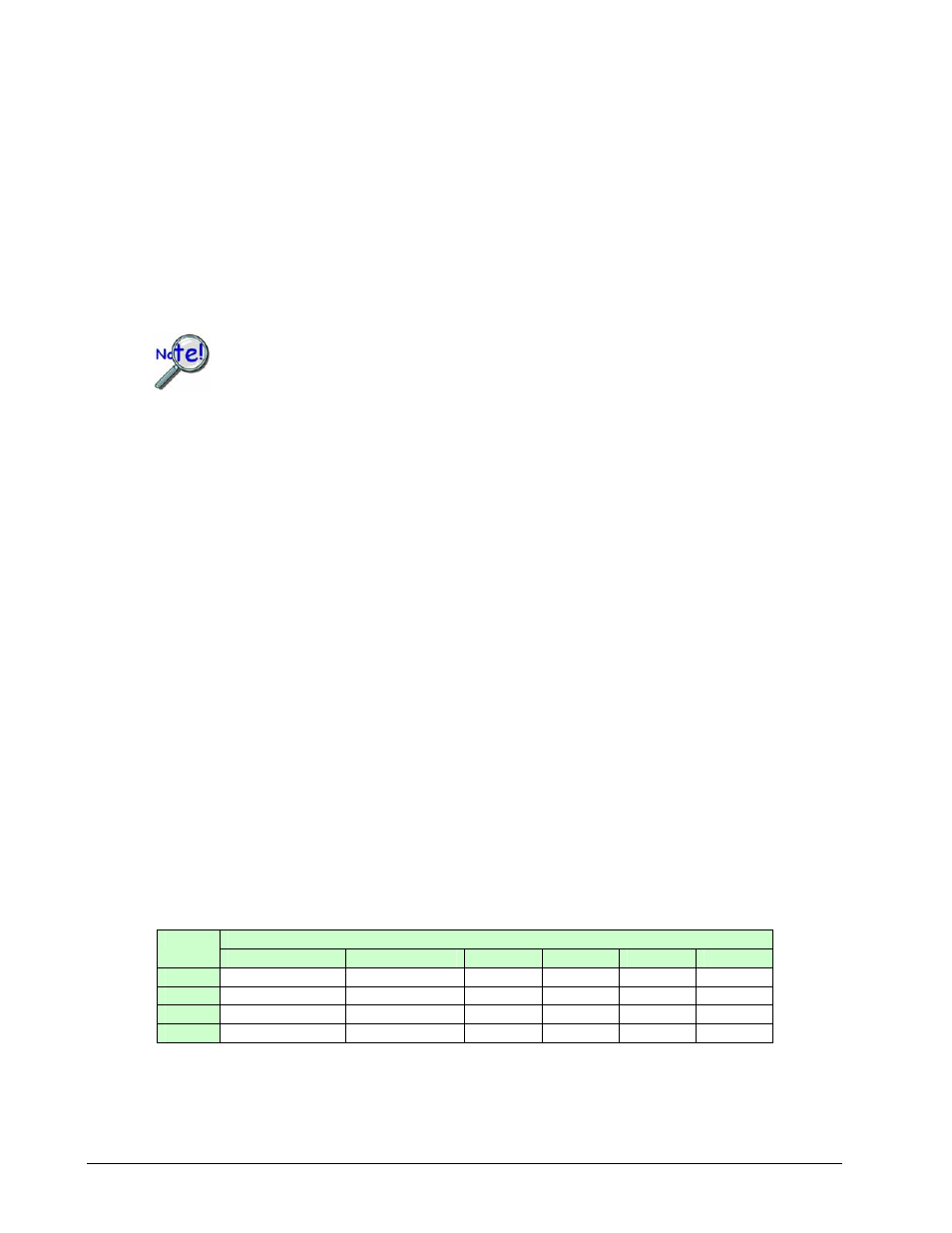Using thermocouples (t/cs), How the t/c acquisition and conversion works – Measurement Computing Data Acquisition Systems rev.10.4 User Manual
Page 172

The daqCvtTCConvert takes raw A/D readings from a thermocouple (T/C) and converts them to
temperature readings in tenths of degrees Celsius (0.1°C), see Note 1. The temp array actually stores the
converted values as 10 times the Celsius temperature--for example, 50°C would be represented as 500 and -
10°C would be -100. The value in the ntemp parameter is checked by the functions to avoid writing past the
end of the array.
Note 1: Unlike daqCvtTCConvert, daqCvtTCConvertF stores actual temperature values instead of values
converted to temperature readings in tenths of degrees Celsius.
Before this commannd is executed, the conversion should be configured using the daqCvtTCSetup
function. For convenience, both setup and conversion can be performed at once by
daqCvtTCSetupConvert
. All non-thermocouple data conversion, if any, must be done by other means.
The total number of data conversions (scan * channels per scan) must be less than 32,768.
Using Thermocouples (T/Cs)
Some products can measure thermocouple temperatures using a internal thermocouple channels or expansion
thermocouple modules or cards. These products normally include a cold-junction compensation circuit (CJC)
channel. This channel must be used in order to compensate for the temperature at the juncture of the
thermocouple to the device. Also, some temperature measurement devices incorporate a zero offset channel
which also can be used to null any offset errors inherent in the system. The CJC channel and zero-offset
channel location depend upon the module or card type. Please refer to your hardware documentation for your
temperature measurement to determine the location of the CJC and zero channels (if applicable). You can also
refer to the examples listed below for programming your specific device. The following example uses Channel
0 as the CJC channel and Channel 1 is shorted for performing auto-zero compensation (as described in the
“Correcting Data” section below). This particular example assumes 14 TC channels so Channels 2 through 15
accept thermocouples for temperature measurement. Up The software supports type J, K, T, E, N28, N14, S,
R and B thermocouples.
The three temperature measurement conversion functions (daqCvtTCConvert, daqCvtTCSetup,and
daqCvtTCSetupConvert
) are designed for temperature measurement where the cold-junction
compensation circuit (CJC) channel (channel 0) reading from the T/C card is immediately followed in the scan
sequence by the T/C channel readings. All readings must be from the same type of T/C. The CJC and T/C
readings are taken with the optimal gains (as described in the “T/C Gains Settings” section below).
How The T/C Acquisition And Conversion Works
The temperature conversion functions take input data from one or more scans from the device. They then
examine the CJC and thermocouple readings within that scan and (after optional averaging), convert them to
temperatures which are stored as output. The procedure for the scan varies, depending on whether auto-zeroing
has been enabled or disabled setting If auto-zeroing has been enabled, the scan readings would resemble the
following table:
Reading
Scan
0
1
2
3
4
5
1
CJC Zero
J Zero
CJC
J1a
J1b
J1c
2
CJC Zero
J Zero
CJC
J2a
J2b
J2c
3
CJC Zero
J Zero
CJC
J3a
J3b
J3c
4
CJC Zero
J Zero
CJC
J4a
J4b
J4c
The first 2 readings of each scan are non-temperature voltage readings to compensate for the CJC circuit and
the shorted channel 0. The third reading is from the CJC, and the remaining 3 readings are from 3 type J
thermocouples. The first 2 readings will be used to remove offset errors in the CJC and T/C reading. However,
if the auto-zero feature is disabled, the first 2 readings will be ignored, as shown in the following table:
4.3-46 Daq API Command Reference
908494
Programmer’s
Manual
